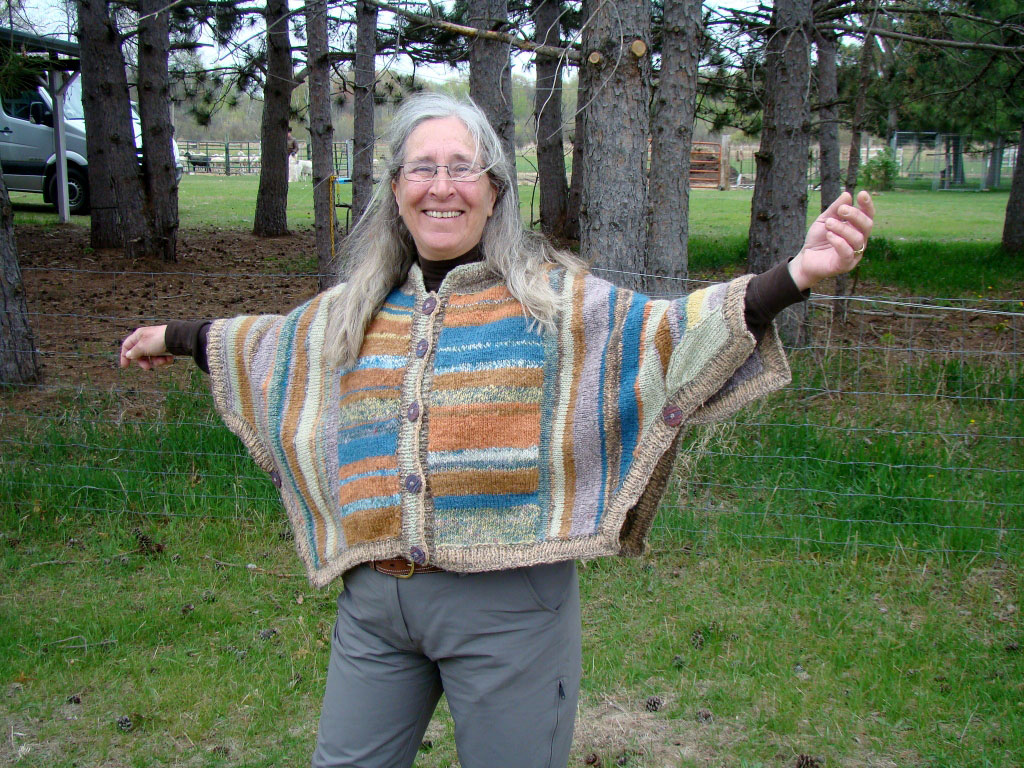Working with wool also means taking care of your woollen items during their lifetime. Some people consider hand-washing wool an onerous chore! Here Elizabeth Zimmermann explains how to look after your handknitteds – needless to say, she only discusses woollens!
[Handknitted sweaters] take time and care ot make, so wash them with time and care.
The water – both suds and rinse water – should be 98.6F, or baby’s bath temperature. Thoroughly dissolve in this anything you trust; soap flakes, Woolite, special detergent for woolens, but not, perhaps, yellow laundry soap, although I have known this to be effective in competent hands. Lately I have been using shampoo, which seems to work as well as anything. But the main thing is the temperature of the water and rinse water.
Let your sweater lie in its soapy bath for a minute or two, to loosen the dirt, and then squeeze it gently a few times. If you have had the forethought to mark any particularly dirty spots with safety pins, these are easily found and attended to. Expel the soapy water by squeezing gently, but NEVER by wringing. I am the fortunate owner of an unautomatic, or thinking woman’s wash-machine, so can use the spinning section of this. Rinse in water of the same tepid temperature, and then really get rid of every drop of rinse water…[ ]…ending up by rolling it in several towels and…jumping on it. Anything to get rid of as much moisture as humanly possible, short of putting it in the drier.
All right then; you have a nice clean damp sweater, and a nice flat table, preferably covered with a large bath towel. All you need now are a pair of hands, a yardstick, and the confident knowledge that you are the master of your sweater. For you are. A damp sweater may be shaped to your will.
Line up the underarm seams by the vertical lines of the stitches.
On a woman’s sweater pat the side seams straight up and down; for a man of heroic stature, taper in the lower edge. In either case, if there is a ribbed edge, coax it in and fold it upward, to renew its elasticity…Pat the shoulders square or sloping, according to the shape of the wearer. Ease the neck-back up, and the neck-front down. This is particularly important inthe sad case of those sweaters which have no neck shaping.
…Go away and do the breakfast dishes or something; the sweater will take some time to dry. Every time you pass through the room you can look at it with a fresh eye, and possibly amend your shaping, to make it look more and more like a real sweater. Don’t take it up until it is bone dry. The n fold the sleeves across the chest, and turn the lower part of the body up over them, and there’s your sweater, clean and sweet-smelling and folded, at practically no cost, and with very little expenditure of time.
-Elizabeth Zimmermann, Knitting Without Tears; basic techniques and easy-to-follow directions for garments to fit all sizes, 1971
 A magnificent woollen cardigan, submitted to the Wovember Gallery Competition by Janis Reuter. Janis says: ‘Here’s my Coopworth sheep shorn, washed, carded, dyed, spun and knit to wear anywhere. The first soak in a big rubber outside tub, PG hand carder, natural dyes and my sweet spinning wheel all contribute here’
A magnificent woollen cardigan, submitted to the Wovember Gallery Competition by Janis Reuter. Janis says: ‘Here’s my Coopworth sheep shorn, washed, carded, dyed, spun and knit to wear anywhere. The first soak in a big rubber outside tub, PG hand carder, natural dyes and my sweet spinning wheel all contribute here’